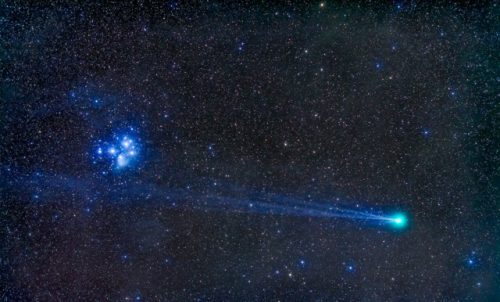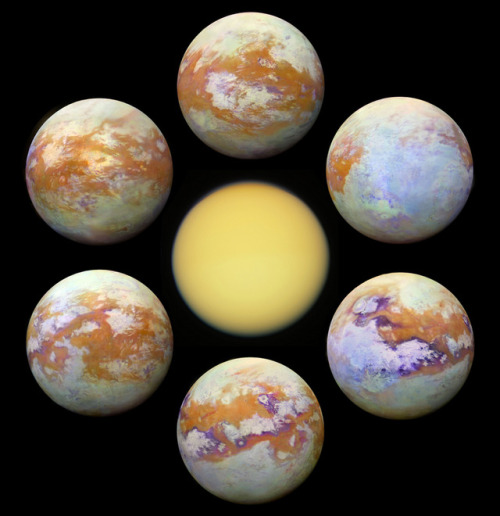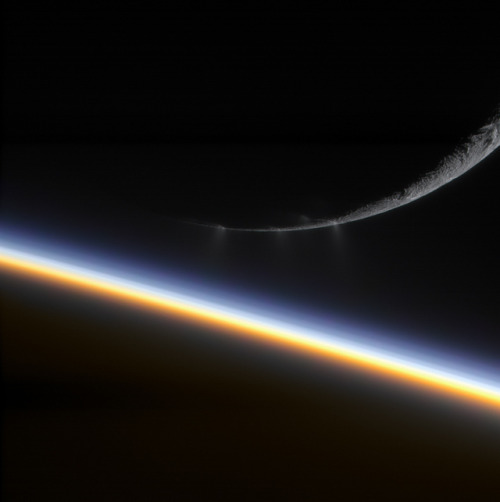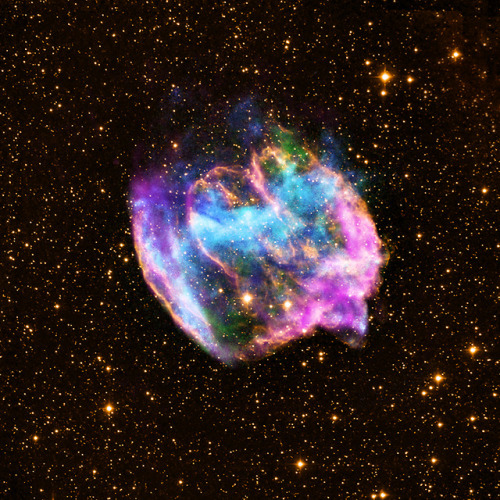I Love This! Our SPS Club Is Building A Memorial To Cassini, And It Should Be Finished And Installed
I love this! Our SPS club is building a memorial to Cassini, and it should be finished and installed by March!
Ultra-Close Orbits of Saturn = Ultra-Cool Science
On Sept. 15, 2017, our Cassini spacecraft ended its epic exploration of Saturn with a planned dive into the planet’s atmosphere–sending back new science to the very last second. The spacecraft is gone, but the science continues!

New research emerging from the final orbits represents a huge leap forward in our understanding of the Saturn system – especially the mysterious, never-before-explored region between the planet and its rings. Some preconceived ideas are turning out to be wrong while new questions are being raised. How did they form? What holds them in place? What are they made of?

Six teams of researchers are publishing their work Oct. 5 in the journal Science, based on findings from Cassini’s Grand Finale. That’s when, as the spacecraft was running out of fuel, the mission team steered Cassini spectacularly close to Saturn in 22 orbits before deliberately vaporizing it in a final plunge into the atmosphere in September 2017.

Knowing Cassini’s days were numbered, its mission team went for gold. The spacecraft flew where it was never designed to fly. For the first time, it probed Saturn’s magnetized environment, flew through icy, rocky ring particles and sniffed the atmosphere in the 1,200-mile-wide (2,000-kilometer-wide) gap between the rings and the cloud tops. Not only did the engineering push the spacecraft to its limits, the new findings illustrate how powerful and agile the instruments were.
Many more Grand Finale science results are to come, but today’s highlights include:
Complex organic compounds embedded in water nanograins rain down from Saturn’s rings into its upper atmosphere. Scientists saw water and silicates, but they were surprised to see also methane, ammonia, carbon monoxide, nitrogen and carbon dioxide. The composition of organics is different from that found on moon Enceladus – and also different from those on moon Titan, meaning there are at least three distinct reservoirs of organic molecules in the Saturn system.

For the first time, Cassini saw up close how rings interact with the planet and observed inner-ring particles and gases falling directly into the atmosphere. Some particles take on electric charges and spiral along magnetic-field lines, falling into Saturn at higher latitudes – a phenomenon known as “ring rain.” But scientists were surprised to see that others are dragged quickly into Saturn at the equator. And it’s all falling out of the rings faster than scientists thought – as much as 10,000 kg of material per second.

Scientists were surprised to see what the material looks like in the gap between the rings and Saturn’s atmosphere. They knew that the particles throughout the rings ranged from large to small. They thought material in the gap would look the same. But the sampling showed mostly tiny, nanograin- and micron-sized particles, like smoke, telling us that some yet-unknown process is grinding up particles. What could it be? Future research into the final bits of data sent by Cassini may hold the answer.

Saturn and its rings are even more interconnected than scientists thought. Cassini revealed a previously unknown electric current system that connects the rings to the top of Saturn’s atmosphere.

Scientists discovered a new radiation belt around Saturn, close to the planet and composed of energetic particles. They found that while the belt actually intersects with the innermost ring, the ring is so tenuous that it doesn’t block the belt from forming.

Unlike every other planet with a magnetic field in our Solar System, Saturn’s magnetic field is almost completely aligned with its spin axis. Think of the planet and the magnetic field as completely separate things that are both spinning. Both have the same center point, but they each have their own axis about which they spin. But for Saturn the two axes are essentially the same – no other planet does that, and we did not think it was even possible for this to happen. This new data shows a magnetic-field tilt of less than 0.0095 degrees. (Earth’s magnetic field is tilted 11 degrees from its spin axis.) According to everything scientists know about how planetary magnetic fields are generated, Saturn should not have one. It’s a mystery physicists will be working to solve.

Cassini flew above Saturn’s magnetic poles, directly sampling regions where radio emissions are generated. The findings more than doubled the number of reported crossings of radio sources from the planet, one of the few non-terrestrial locations where scientists have been able to study a mechanism believed to operate throughout the universe. How are these signals generated? That’s still a mystery researchers are looking to uncover.
For the Cassini mission, the science rolling out from Grand Finale orbits confirms that the calculated risk of diving into the gap – skimming the upper atmosphere and skirting the edge of the inner rings – was worthwhile.

Almost everything going on in that region turned out to be a surprise, which was the importance of going there, to explore a place we’d never been before. And the expedition really paid off!
Analysis of Cassini data from the spacecraft’s instruments will be ongoing for years to come, helping to paint a clearer picture of Saturn.
To read the papers published in Science, visit: URL to papers
To learn more about the ground-breaking Cassini mission and its 13 years at Saturn, visit: https://www.nasa.gov/mission_pages/cassini/main/index.html
Make sure to follow us on Tumblr for your regular dose of space: http://nasa.tumblr.com.
More Posts from Astrosciencechick and Others




And that’s when Earth made dolphins. LOL.
I’ll never tell 🤭
space edition - tag yourself
moonlight: sleep deprived af, genius ideas at 2:00 am, constantly underestimated, tangled earbuds, pretends like they don’t care but actually cares a lot, unscented candles
comet: will fight you for their friends, perfect eyeliner, doesn’t get angry but instead just fucking glares at you until you crumble, loves thunderstorms, cat person
stars: has no idea what they’re doing 167% of the time, artsy, likes halsey, string lights everywhere, loves fuzzy socks and blankets, probably wears space buns
alien: secretly is super good at makeup but doesn’t wear it often, lots of coffee, probably has a pet fish, reads young adult fantasy novels, closet conspiracy theorist, arms and papers always covered in doodles
black hole: 97% of their wardrobe is hoodies, professional procrastinator, can write, probably owns essential oils, eats ramen at 1:00 am, only writes in pen, actually really cool but doesn’t know it
spacedust: bath bombs, a+ insta feed, long flowy skirts and tops, city person, pretends to have their shit together, secretly loves kermit memes, probably dyed their hair at one point

Comet Lovejoy and The Pleiades

I want to be a new genre.
(via Etsy)










These 5 Women Deserved, And Were Unjustly Denied, A Nobel Prize In Physics
“The fact of the matter is that there is no concrete evidence that women are in any way inherently inferior to men when it comes to work in any of the sciences or any of their sub-fields. But there is overwhelming evidence for misogyny, sexism, and institutional bias that hinders their careers and fails to recognize them for their outstanding achievements. When you think of the Nobel Laureates in Physics and wonder why there are so few women, make sure you remember Cecilia Payne, Chien-Shiung Wu, Vera Rubin, Jocelyn Bell-Burnell, and Lise Meitner. The Nobel committee may have forgotten or overlooked their contributions until it was too late, but that doesn’t mean we have to. In all the sciences, we want the best, brightest, most capable, and hardest workers this world has to offer. Looking back on history with accurate eyes only serves to demonstrate how valuable, and yet undervalued, women in science have been.”
In most intellectual lines of work, if you claimed that a certain type of person wasn’t mentally capable of doing as good a job as another, you’d be rightfully called a bigot. Yet somehow, in a myriad of the sciences (such as physics), there are those who simultaneously claim that “women are inferior to men” alongside the claim that it isn’t sexist or bigoted to say so.
But what there is a long history of, in physics, is women being denied their due credit for discoveries and advances that they were an integral part of. Even in the aftermath of last week’s events, when physicist Donna Strickland became just the third woman ever to be awarded a Nobel Prize, many have claimed that she isn’t worthy, for reasons that have never been applied to men.
Well, meet five women you might not be aware of who certainly earned a Nobel Prize, even if they were never awarded one. We cannot rewrite history, but we can right the legacy of its wrongs in our public consciousness.

Seeing Titan : Shrouded in a thick atmosphere, Saturn’s largest moon Titan really is hard to see. Small particles suspended in the upper atmosphere cause an almost impenetrable haze, strongly scattering light at visible wavelengths and hiding Titan’s surface features from prying eyes. But Titan’s surface is better imaged at infrared wavelengths where scattering is weaker and atmospheric absorption is reduced. Arrayed around this centered visible light image of Titan are some of the clearest global infrared views of the tantalizing moon so far. In false color, the six panels present a consistent processing of 13 years of infrared image data from the Visual and Infrared Mapping Spectrometer (VIMS) on board the Cassini spacecraft. They offer a stunning comparison with Cassini’s visible light view. via NASA


Cherenkov Radiation: When Electrons go Faster than the Speed of Light!
Well faster than light is an overstatement in the sense that it only happens in water. Basically the speed of light in water is 0.75c and although matter can be accelerated faster than that it is still below the speed of light in a vacuum. And that’s what basically causes the blue light or Chernenkov radiation, particles in a medium moving faster than the speed of light in that medium.
How does that happen though? Well that is due to very excited neutrinos produced by the nuclear reactor colliding with the nuclei of the water that is surrounding it. The collision produces muons and electrons which have the resulting momentum faster than the speed that light can travel in water. Which in turn brings the electrons in the surrounding water atoms/molecules to a higher state, and when they return back to the ground state they emit light in the wavelength of the resulting momentum transfer from those excited particles.
A common analogy is the sonic boom of a supersonic aircraft or bullet. The sound waves generated by the supersonic body propagate at the speed of sound itself; as such, the waves travel slower than the speeding object and cannot propagate forward from the body, instead forming a shock front. In a similar way, a charged particle can generate a light shock wave as it travels through an insulator.
More science and gifs on my blog: rudescience Gif made from: This video References: (x), (x). You can donate to support more science content on tumblr: here

Enceladus and Saturn
Image credit: Gordan Ugarkovic

My condolences to the people of France.
Terrorism has once again shown it is prepared deliberately to stop at nothing in creating human victims. An end must be put to this. As never before, it is vital to unite forces of the entire world community against terror.
I believe that the world will know the blessing of peace only when the love for power is overthrown by the power of love.
To all the people of France, may the force be with you during these tough vicious times.

PC: shirtshovel

The highly distorted supernova remnant shown in this image may contain the most recent black hole formed in the Milky Way galaxy. The image combines X-rays from NASA’s Chandra X-ray Observatory in blue and green, radio data from the NSF’s Very Large Array in pink, and infrared data from Caltech’s Palomar Observatory in yellow.
Credits: X-ray: NASA/CXC/MIT/L.Lopez et al; Infrared: Palomar; Radio: NSF/NRAO/VLA
-
 foywharftesmort liked this · 1 year ago
foywharftesmort liked this · 1 year ago -
 thomasbrisenio liked this · 2 years ago
thomasbrisenio liked this · 2 years ago -
 chromatoma reblogged this · 2 years ago
chromatoma reblogged this · 2 years ago -
 lunaslashsea reblogged this · 3 years ago
lunaslashsea reblogged this · 3 years ago -
 lunaslashsea liked this · 3 years ago
lunaslashsea liked this · 3 years ago -
 starry-shores reblogged this · 3 years ago
starry-shores reblogged this · 3 years ago -
 an-abyss-called-life liked this · 3 years ago
an-abyss-called-life liked this · 3 years ago -
 xesusrl liked this · 4 years ago
xesusrl liked this · 4 years ago -
 illuminfae-ix reblogged this · 4 years ago
illuminfae-ix reblogged this · 4 years ago -
 illuminfae-ix liked this · 4 years ago
illuminfae-ix liked this · 4 years ago -
 ohthesass liked this · 4 years ago
ohthesass liked this · 4 years ago -
 joybirds reblogged this · 4 years ago
joybirds reblogged this · 4 years ago -
 joybirds liked this · 4 years ago
joybirds liked this · 4 years ago -
 iamimaginingtheoceanstill liked this · 4 years ago
iamimaginingtheoceanstill liked this · 4 years ago -
 phantasmaphagorical reblogged this · 4 years ago
phantasmaphagorical reblogged this · 4 years ago -
 phantasmaphagorical liked this · 4 years ago
phantasmaphagorical liked this · 4 years ago -
 crellins liked this · 4 years ago
crellins liked this · 4 years ago -
 wrongfooted liked this · 4 years ago
wrongfooted liked this · 4 years ago -
 bentgrassoutdoors reblogged this · 4 years ago
bentgrassoutdoors reblogged this · 4 years ago -
 bentgrassoutdoors liked this · 4 years ago
bentgrassoutdoors liked this · 4 years ago -
 dmitriy-rusanov liked this · 5 years ago
dmitriy-rusanov liked this · 5 years ago -
 ydda6 liked this · 5 years ago
ydda6 liked this · 5 years ago -
 1amtheh1ghway reblogged this · 5 years ago
1amtheh1ghway reblogged this · 5 years ago -
 1amtheh1ghway liked this · 5 years ago
1amtheh1ghway liked this · 5 years ago -
 high-witchery liked this · 5 years ago
high-witchery liked this · 5 years ago -
 acidic-android reblogged this · 5 years ago
acidic-android reblogged this · 5 years ago -
 dahliahsp liked this · 5 years ago
dahliahsp liked this · 5 years ago -
 mrslugdemon liked this · 5 years ago
mrslugdemon liked this · 5 years ago -
 john2267 reblogged this · 5 years ago
john2267 reblogged this · 5 years ago -
 john2267 liked this · 5 years ago
john2267 liked this · 5 years ago -
 a-pile-of-joltiks reblogged this · 5 years ago
a-pile-of-joltiks reblogged this · 5 years ago -
 mewwile liked this · 6 years ago
mewwile liked this · 6 years ago -
 newfriendly reblogged this · 6 years ago
newfriendly reblogged this · 6 years ago